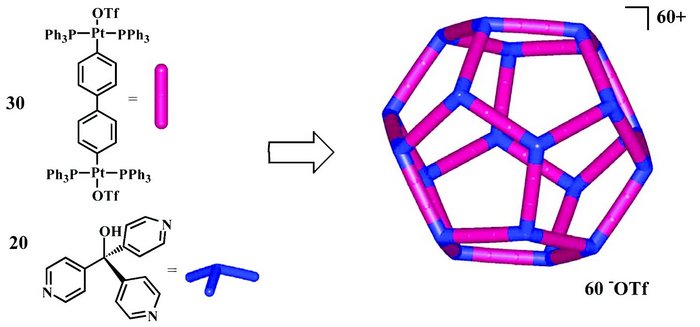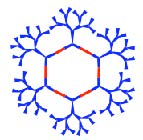
 |
| HOME | NEWS | MEETINGS | EDUCATION | ACTIVITIES | CONTACT US |
|---|
| October 16, 2009 Meeting - Basolo Award Dinner- |
|---|
| Peter J. Stang |  |
|
|
“Abiological Self-Assembly: Predesigned Metallacycles and Metallacages via Coordination” |
|
Date: October 16 , 2009 Location: Northwestern University
2145 Sheridan Road
Evanston, IL 60208
Lecture room 3, 1st floor
Technological InstituteDinner: Scott Hall, Room 165
Northwestern University
601 University Place
Evanston
Cost: $35.00 for members of ACS and their guests, $37.00 for non-members,
$20 for students, retired, or unemployedDinner reservations are required and should be received in the Section Office via phone (847-391-9091), email (chicagoacs@ameritech.net), or web by noon on Tuesday, October 13. PLEASE HONOR YOUR RESERVATIONS. The Section must pay for all food orders. No-shows will be billed. Seating will be available for those who wish to attend only the meeting.
Please REGISTER ON LINE
4:30 PM Basolo Medal Lecture at Lecture Room 3, Tech Institute
5:30 PM Job Club at Scott Hall
6:15 PM Reception for Dr. Stang at Scott Hall, complementary wine, soft drinks, hors d'oeuvres
7:15 PM Dinner at Scott Hall, Reservations required
8:30 PM General Meeting, presentation of the Basolo Medal by Dr. Joseph Hupp, acceptance by Dr. Peter StangA tour of Dearborn Observatory is available following the dinner. The observatory is located southeast of the Tech Institute.
Topic: “Abiological Self-Assembly: Predesigned Metallacycles and Metallacages via Coordination”
Abstract:
The use of just two types of building blocks, linear and angular, in conjunction with symmetry considerations allows the rational design of a wide range of metallocyclic polygons and polyhedra via the coordination motif.1-3 We have used this approach to self-assemble a variety of 2D supramolecular polygons such as triangles, rectangles, squares, hexagons, etc. as well as a number of 3D supramolecular polyhedra: truncated tetrahedra, triginal prisms, cubooctahedra4 and dodecahedra.5 An example of the methodology is illustrated in Figure 1. More recently we have functionalized these rigid supramolecular scaffolds with different electroactive, host-guest, dendritic (Figure 2), and hydrophobic/hydrophilic moieties and have investigated the properties of these multifunctionalized supramolecular species. Additionally, we have begun to explore the self-assembly of 2D polygons and 3D polyhedra on a variety of surfaces with the aim of developing their potential to be used in device settings. These novel, supramolecular ensembles are characterized by physical and spectral means. The design strategy, formation, characterization and potential uses of these novel metallocyclic assemblies will be discussed, along with our recent results in crystal engineering.

Figure 1. Self-Assembly of a nanoscale dodecahedron.
 Figure
2. A cavity-cored dendritic hexagon
Figure
2. A cavity-cored dendritic hexagon
1. High Symmetry Coordination Cages via Self-Assembly, S.R. Seidel, P.J. Stang, Acc. Chem. Res., 2002, 35, 972-983.
2. Self-Assembly of Discrete Cyclic Nanostructures Mediated by Transition Metals, S. Leininger, B. Olenyuk, P. J. Stang, Chem. Rev., 2000, 100, 853-908 .
3. Self-Assembly, Symmetry and Molecular Architecture: Coordination as the Motif in the Rational Design of Supramolecular Metallocyclic Polygons and Polyhedra, P. J. Stang, B. Olenyuk, Acc. Chem. Res., 1997, 20, 502-518.
4. Self-Assembly of Nanoscale Cuboctahedra by Coordination Chemistry, B. Olenyuk, J. A. Whiteford, A. Fechtenkötter, P. J. Stang, Nature, 1999, 398, 796-799.
5. Self-Assembly of Nanoscopic Dodecahedra from 50 Predesigned Components, B. Olenyuk, M. D. Levin, J. A. Whiteford, J. E. Shield, P. J. Stang, J. Am. Chem. Soc., 1999, 121, 10434-10435.
Biograpy:
Peter J. Stang was born in 1941 in Nürnberg, Germany, raised in Hungary until 1956, and educated in the USA. He earned a B.S. (Magna cum laude) from DePaul University in Chicago in 1963 and a Ph.D. degree from the University of California at Berkeley in 1966. After NIH postdoctoral work at Princeton, he joined the faculty at Utah in 1969 where, since 1992, he holds the rank of Distinguished Processor of Chemistry. He served as Department Chair from 1989-1995 and as Dean of the College of Science at Utah from 1997-2007.
Professor Stang is also a Senior Fellow, since 1991, at the Loker Hydrocarbon Research Institute at the University of Southern California and since 2004 he is an Honorary Professor of Chemistry at the Chinese Academy of Sciences, Institute of Chemistry (ICCAS) in Beijing, China, as well as Honorary Professor at Zhejiang University in Hanzhou, China.
In his 40 years in academia he has delivered hundreds of named lectures and invited lectures at both national and international institutions and conferences. He has served on numerous committees, advisory boards, board of directors and board of governors. He has been a Fulbright Fellow, a JSPS Fellow, a Lady Davis Visiting Professor, and an A.v. Humboldt Senior U.S. Scientist.
Stang is a member of the U.S. National Academy of Sciences, a Fellow of the American Academy of Arts and Sciences, a foreign member of the Chinese Academy of Sciences and the Hungarian Academy of Sciences. He has received the ACS James Flack Norris Award in Physical-Organic Chemistry (1998); the ACS George A. Olah Award in Hydrocarbon or Petroleum Chemistry (2003); the Linus Pauling Medal (2006) and the ACS Award for Creative Research and Applications of Iodine Chemistry (2007). He holds Honorary Doctorates of Science (D.Sc. honoris causa) from both Moscow State University, Moscow, Russia, and the Russian Academy of Sciences (1992).
After serving as an Associate Editor of JACS from 1982-1999 and Editor-in-Chief of JOC from 2000-2001, Professor Stang has been the Editor of JACS since 2002. He has authored or co-authored over 400 scientific publications including two dozen widely cited reviews.
His early research involved unsaturated reactive intermediates like vinyl cations and unsaturated carbenes. More recently, he was involved in polyvalent iodine chemistry and in particular alkynyl iodonium salts and derived chemistry. His current research is centered in the area of supramolecular chemistry and self-assembly, with primary emphasis on using the coordination based “directional bonding” paradigm to self-assemble and study pre-designed metallacycles and metallacages such as cuboctahedra, dodecahedra etc. These systems are of significance in nanoscience and nanotechnology.
Besides chemistry he enjoys travel, classical music, gourmet food and wines.
Parking: Free across from the Technological Institute.
Scott Hall is located 4 blocks southwest of the Tech Institute. From the Tech Institute, take Sheridan Road south pass Emerson Street. Scott Hall is next to Cahn Auditorium. Enter Scott at the south entrance.
Parking: There is no parking lot adjacent to Scott Hall. Parking is available near Pick-Staiger Concert Hall located on the same side of the street as Tech Institute but nearer the lake.
Dinner:
Please note: Seating is LIMITED for the dinner. Please make your reservation early.
| Last updated 10/16/09 Copyright © 2009, Chicago Section, The American Chemical Society |
Webs by Wizardcraft |